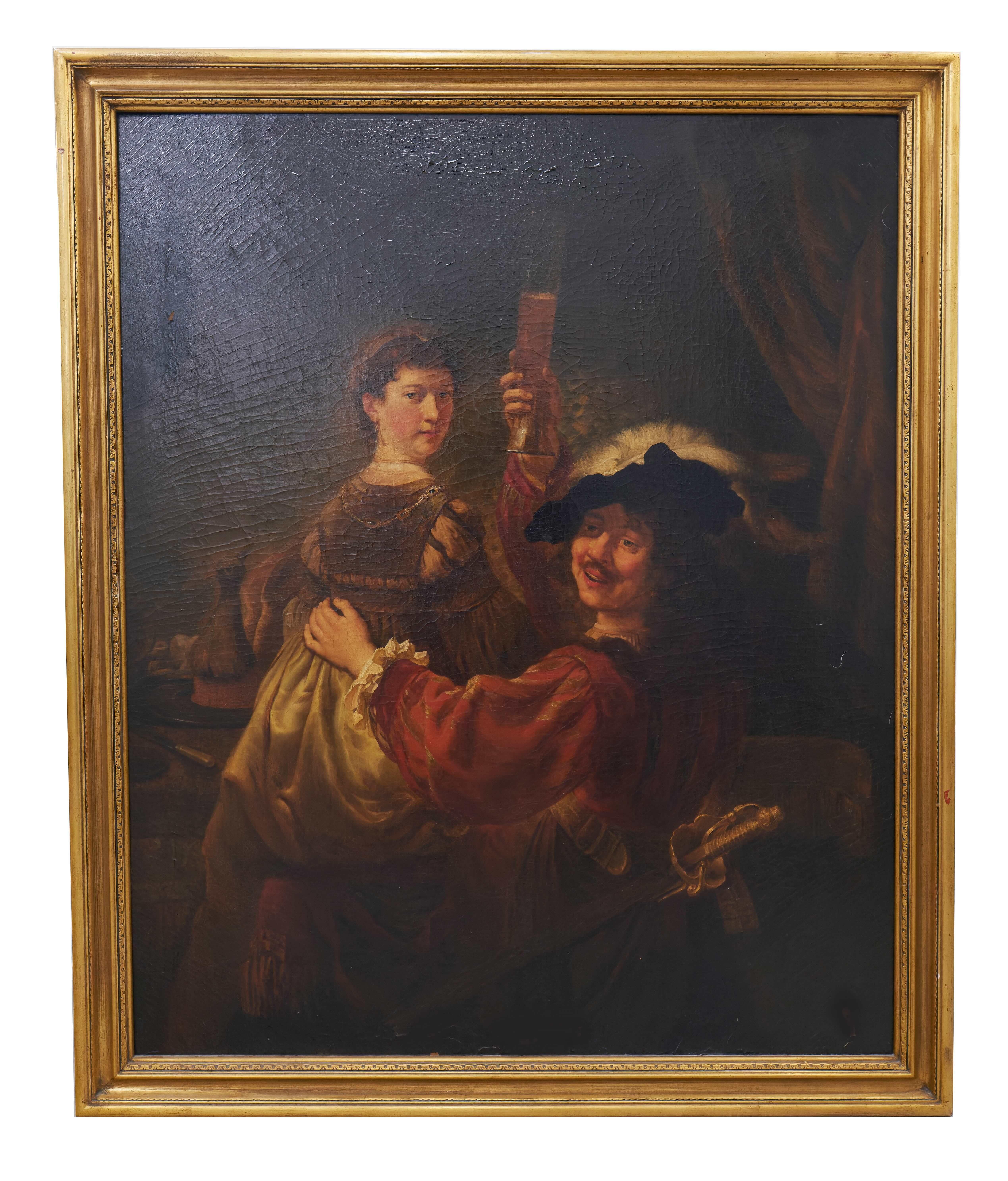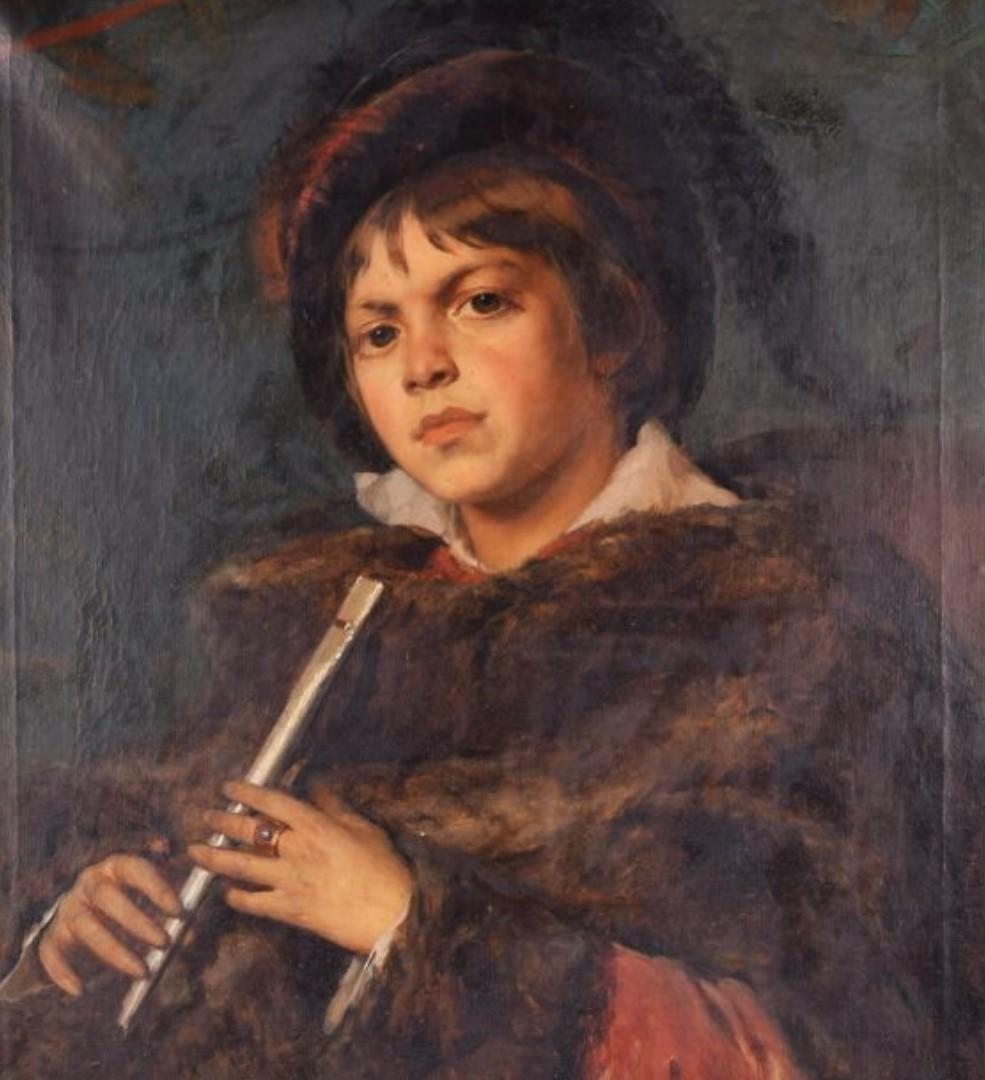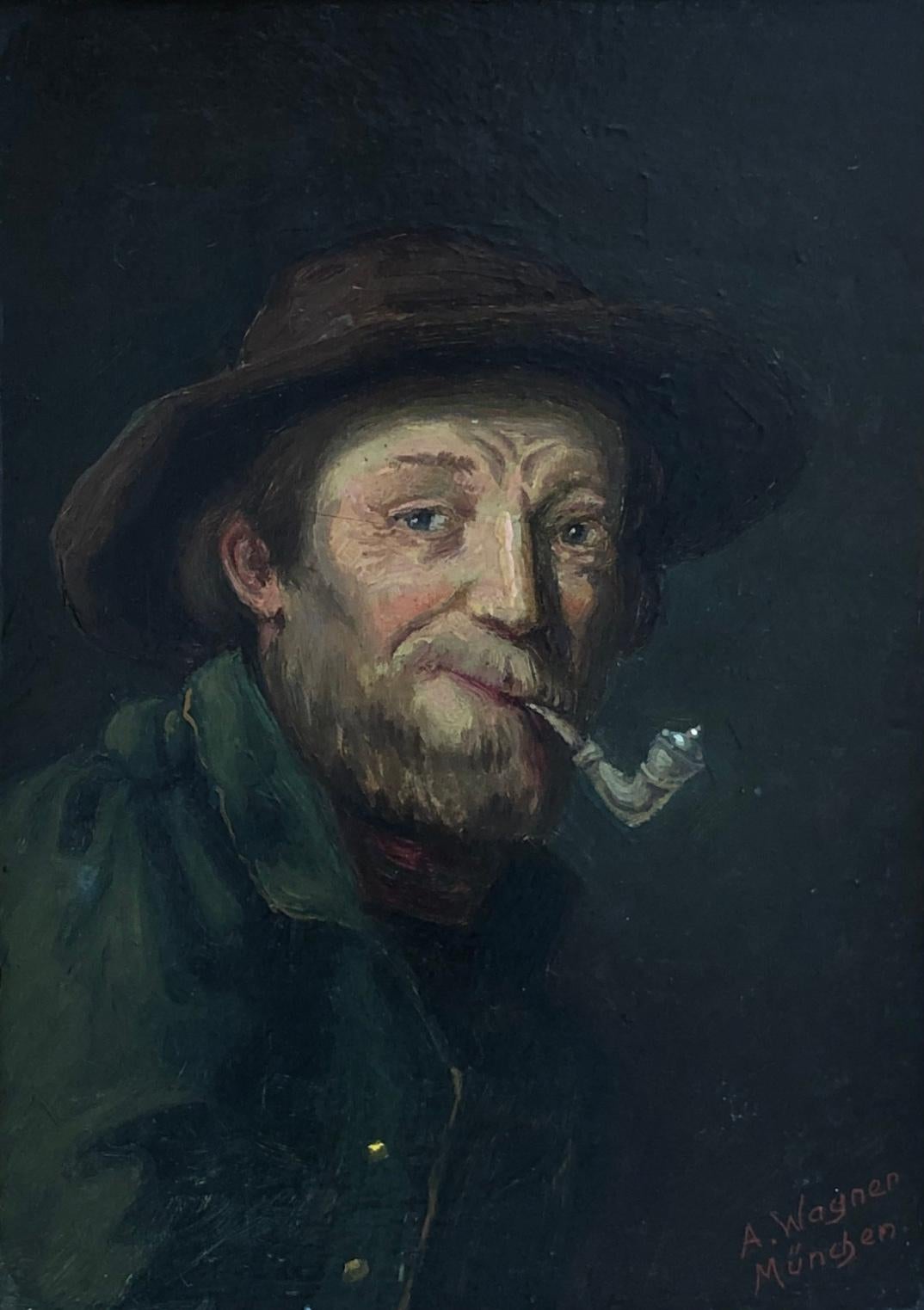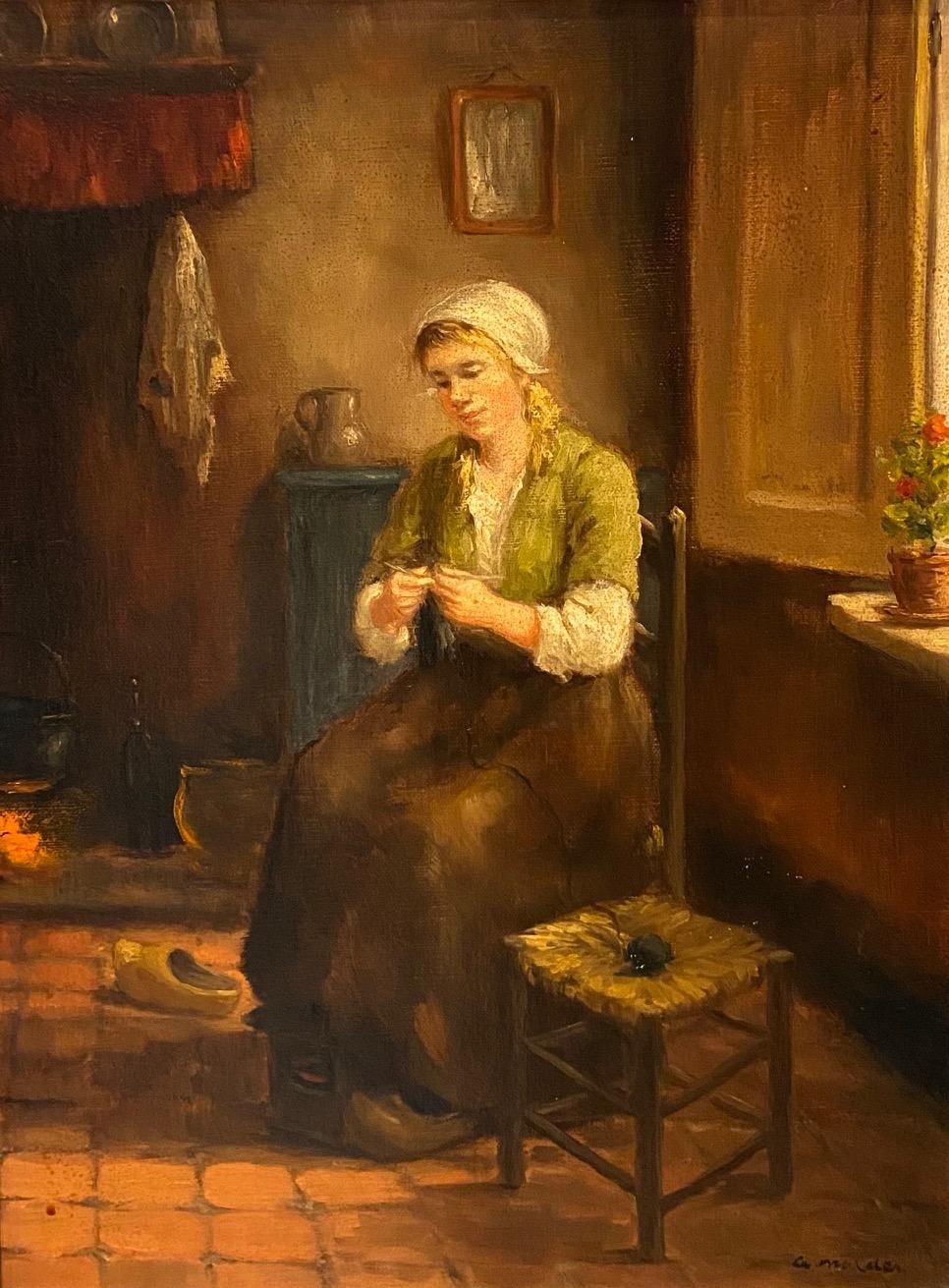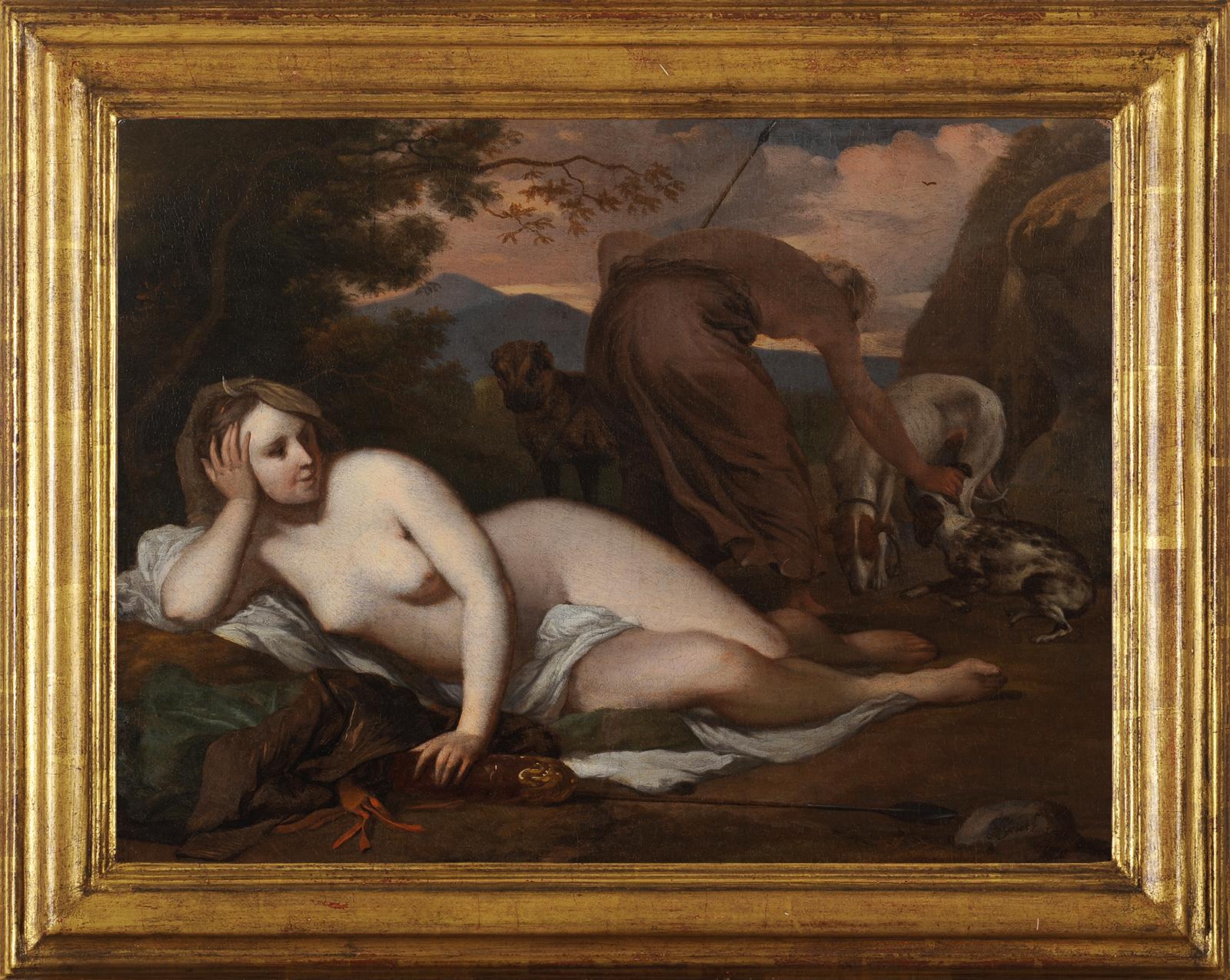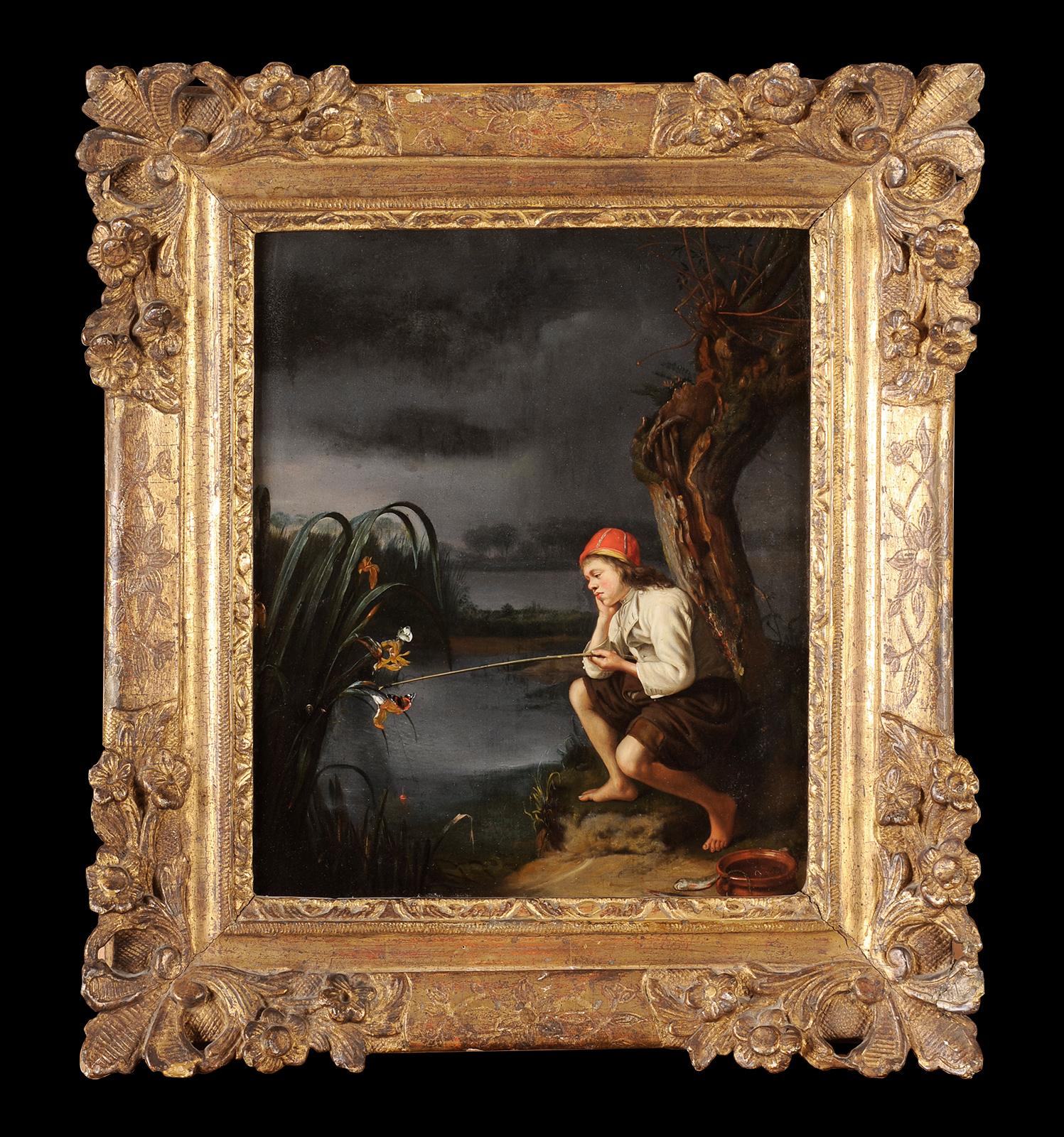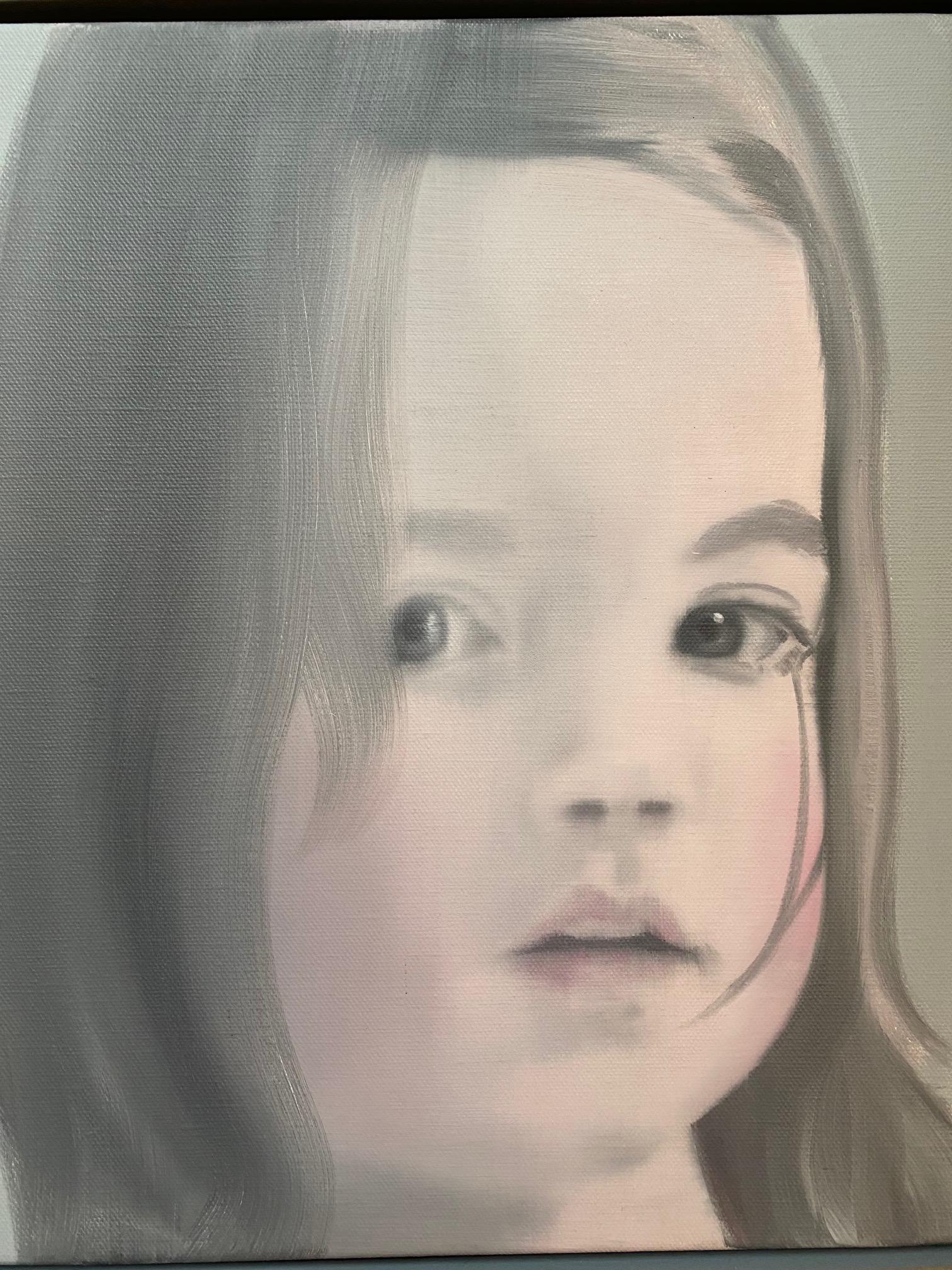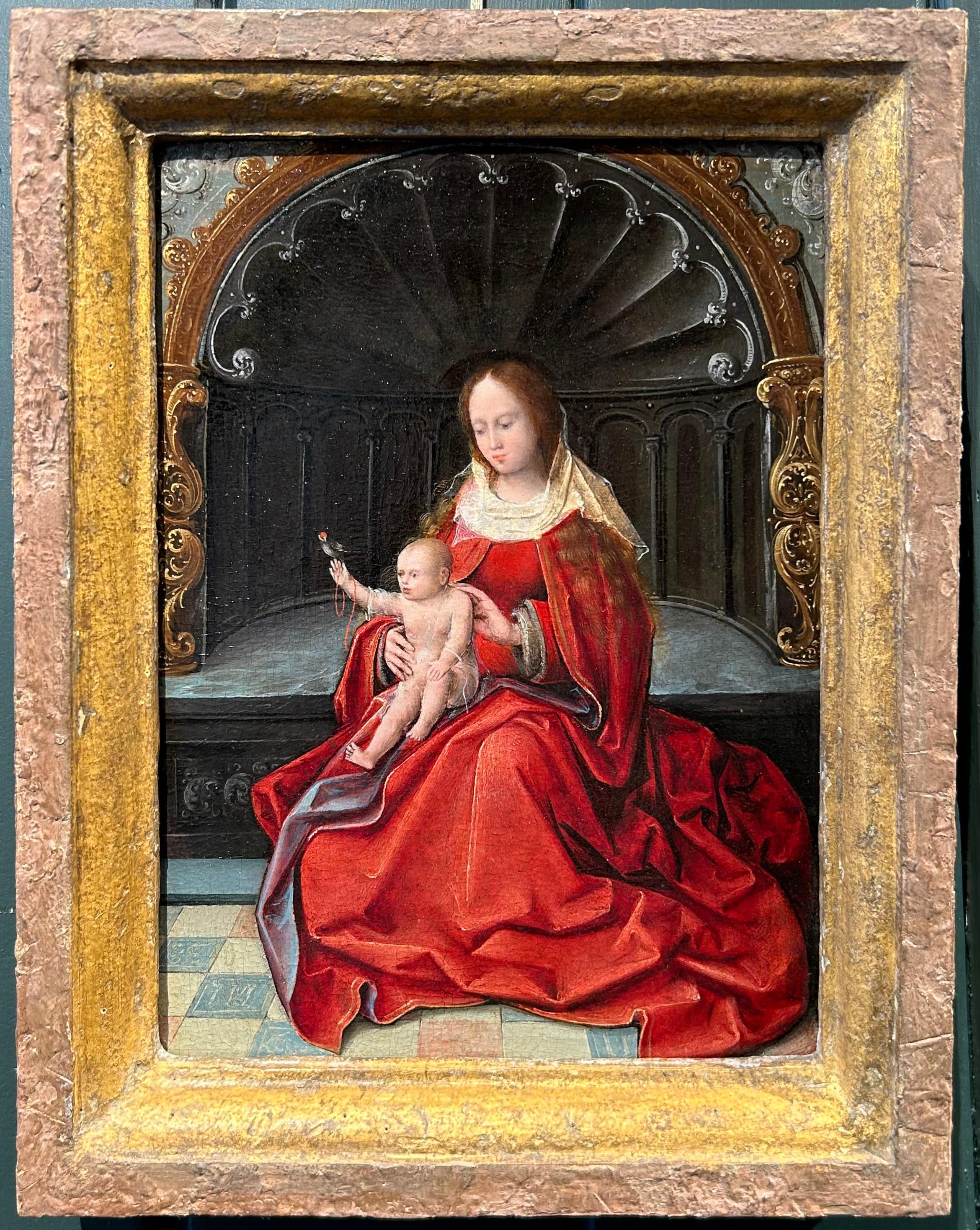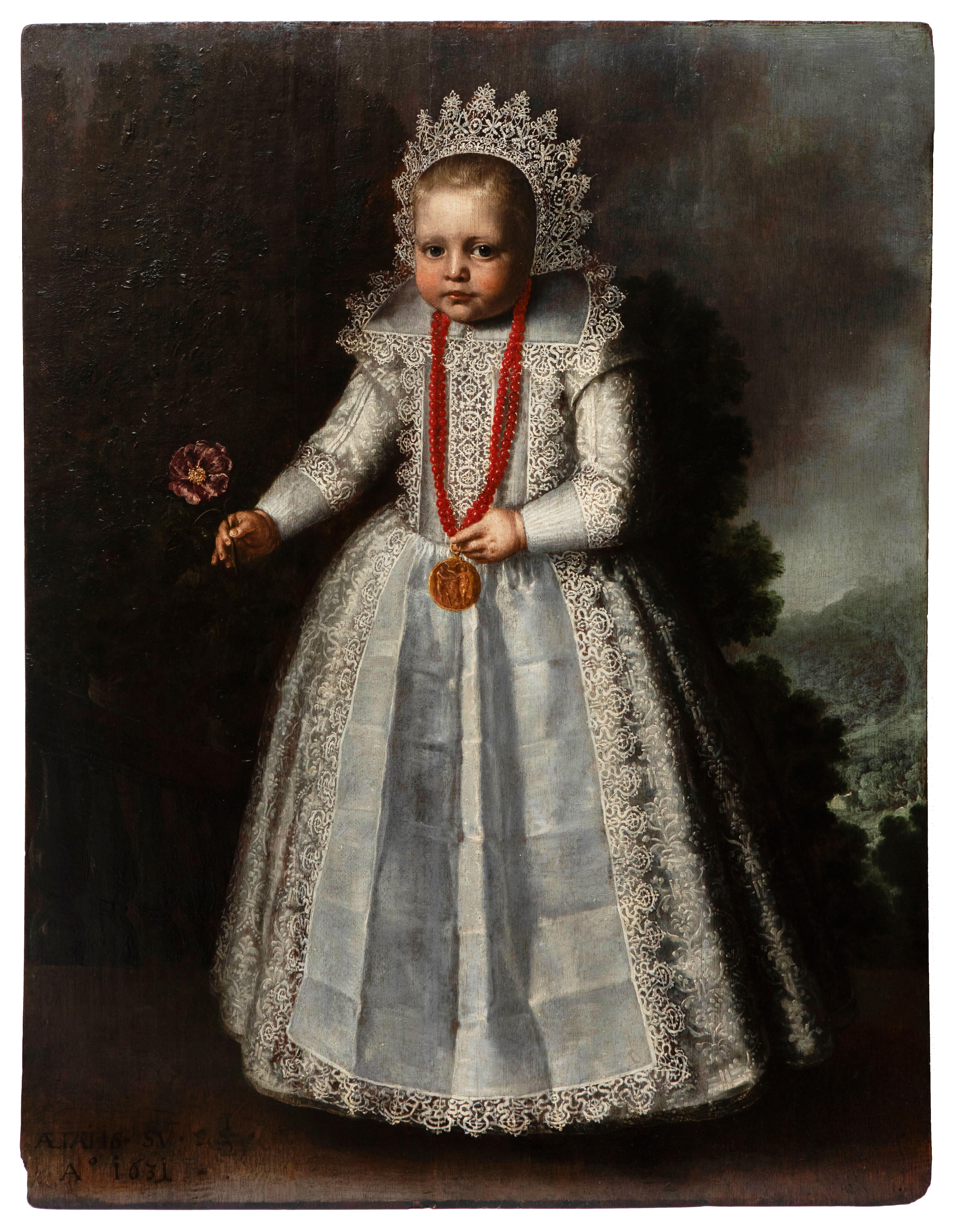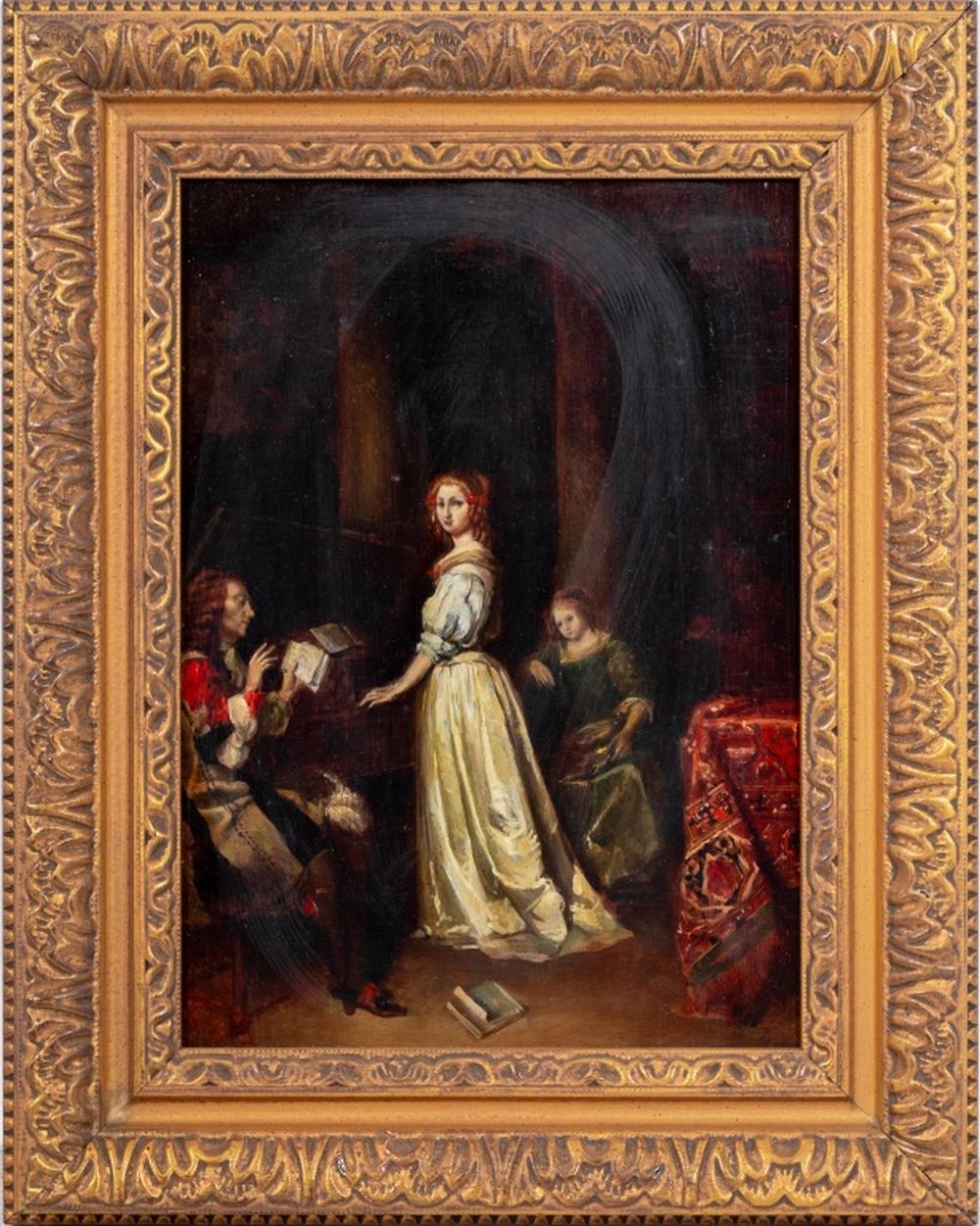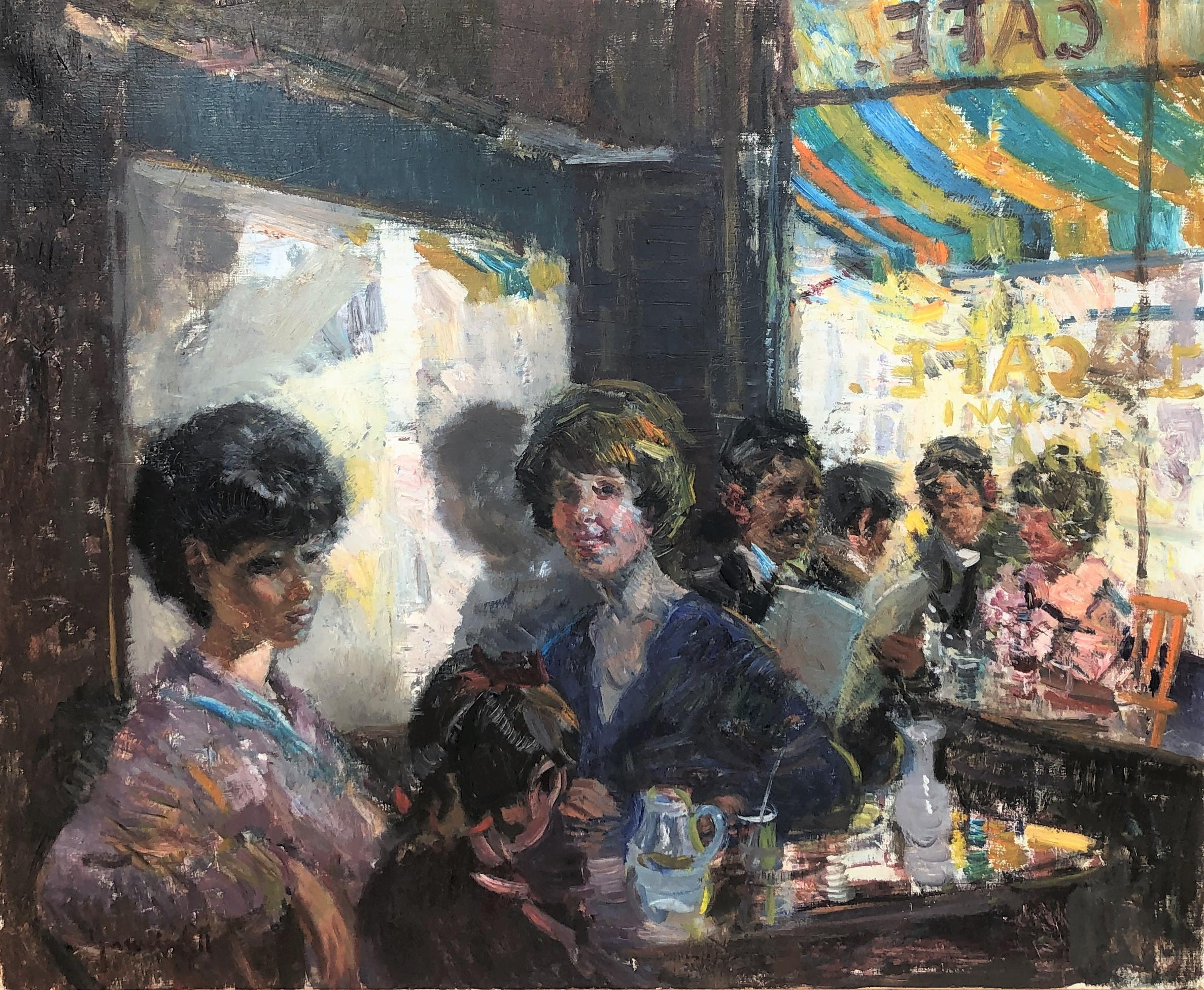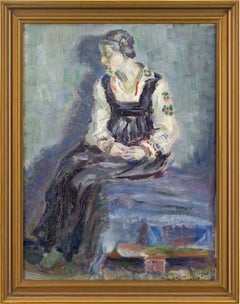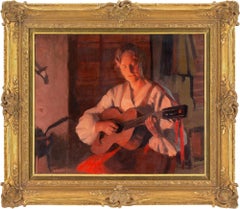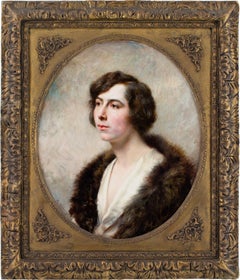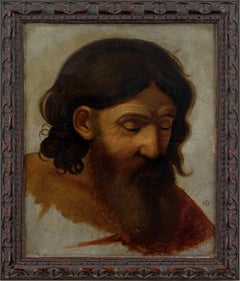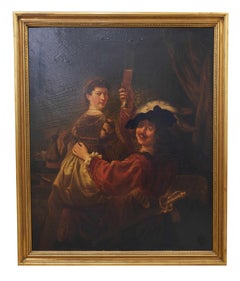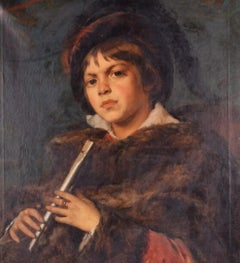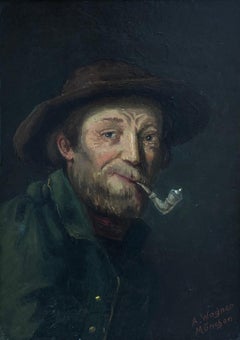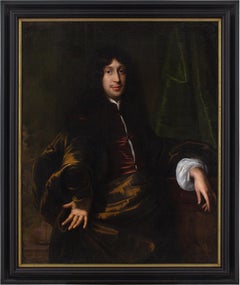
Jan De Baen, Portrait Of A Gentleman
View Similar Items
Want more images or videos?
Request additional images or videos from the seller
1 of 12
Jan de BaenJan De Baen, Portrait Of A Gentleman1675
1675
About the Item
- Creator:Jan de Baen (1633 - 1702, Dutch)
- Creation Year:1675
- Dimensions:Height: 51 in (129.54 cm)Width: 43 in (109.22 cm)
- Medium:
- Movement & Style:
- Period:1670-1679
- Condition:Cleaned. Revarnished. Canvas relined. Fine craquelure throughout. Surface a little undulant. Later stretcher. Historic restorations. The paint layer is stable. Frame in excellent condition.
- Gallery Location:Cheltenham, GB
- Reference Number:1stDibs: LU2328216064472
About the Seller
5.0
Platinum Seller
Premium sellers with a 4.7+ rating and 24-hour response times
Established in 2017
1stDibs seller since 2023
229 sales on 1stDibs
Typical response time: 2 hours
Authenticity Guarantee
In the unlikely event there’s an issue with an item’s authenticity, contact us within 1 year for a full refund. DetailsMoney-Back Guarantee
If your item is not as described, is damaged in transit, or does not arrive, contact us within 7 days for a full refund. Details24-Hour Cancellation
You have a 24-hour grace period in which to reconsider your purchase, with no questions asked.Vetted Professional Sellers
Our world-class sellers must adhere to strict standards for service and quality, maintaining the integrity of our listings.Price-Match Guarantee
If you find that a seller listed the same item for a lower price elsewhere, we’ll match it.Trusted Global Delivery
Our best-in-class carrier network provides specialized shipping options worldwide, including custom delivery.More From This Seller
View AllJelle Troelstra, Portrait Of A Seated Woman, Oil Painting
Located in Cheltenham, GB
This early 20th-century oil painting by Dutch artist Jelle Troelstra (1891-1979) depicts a seated woman wearing a floral top and dark grey dress.
With eyes closed and hands held upo...
Category
1910s Post-Impressionist Portrait Paintings
Materials
Canvas, Oil
Sam Uhrdin, The Twilight View
By Sam Uhrdin
Located in Cheltenham, GB
This beautiful mid-20th-century oil painting by Swedish artist Sam Uhrdin (1886-1964) depicts a woman playing the guitar in a gently lit room at twilight.
Bathed in a warm radiance ...
Category
1950s Portrait Paintings
Materials
Canvas, Oil
Honoré Louis Umbricht, Portrait Of Marguerite Grosjean, Oil Painting
Located in Cheltenham, GB
This early 20th-century oil painting by French artist Honoré Louis Umbricht (1860-1943) depicts Marguerite Grosjean (b. 1895), the daughter of law of Alexandre Grosjean, the mayor of Besançon.
Umbricht was a distinguished painter of genre scenes, landscapes, stills and portraits. Born in the attractive city of Obernai, in the Alsace region of North-East France, he had inspiration at his fingertips. Distant mountains, picturesque valleys, the sparkling Ehn River, and sprawling rural plains - a veritable smorgasbord of views.
He honed his draughtsmanship under the tuition of his uncle, ‘Hess’, and was soon offered a scholarship by the German government to study in Munich. He refused, however, and headed for Paris to train under the highly-regarded Léon Bonnat (1833-1922).
Bonnat’s studio was synonymous with success and he encouraged his students to paint freely and with expression. His own portraits were influenced by the Spanish masters, such as Diego Velázquez (1599-1660), and he extolled the virtues of this style. Umbricht was in fine company as Bonnat also trained John Singer Sargent, P. S. Krøyer, Erik Werenskiold, Henri de Toulouse-Lautrec and Gustave Caillebotte among others.
Following his training, the Paris Salon beckoned and the young Umbricht’s debut came in 1880. By 1884, he’d been awarded his first medal and several more would follow including at the Chicago and London Exhibition and the prestigious Exposition Universelle (1900). He was subsequently knighted with the Cross of the Order of Leopold.
Midway through his career, the critics were alive with praise describing his portraits as “full of mastery” and with “very true and harmonious” colouring. In 1911, the newspaper ‘Le Rappel...
Category
1920s French School Portrait Paintings
Materials
Canvas, Oil
Late 19th-Century French School, Head Study
Located in Cheltenham, GB
This enchanting late 19th-century French oil painting depicts the head of a bearded man.
Rendered with an abundance of consideration and feeling, the introspection of the figure po...
Category
1890s French School Portrait Paintings
Materials
Oil, Canvas
George Clint ARA (Attributed), Portrait Of A Lady In A Brown Dress
Located in Cheltenham, GB
This early 19th-century half-length portrait attributed to British artist George Clint ARA (1770-1854) depicts a young lady wearing a beautiful brown dress, bonnet decorated with small flowers, gold earrings and coral necklace. Clint was a distinguished painter and mezzotint engraver predominantly known for portraiture and dramatic scenes.
Set before an evocative classically-inspired backdrop, she looks out from across the centuries with a composed demeanour. Adorned in the latest fashions, oversized ‘gigot’ sleeves, a delicately-poised bonnet, and a coral necklace for good luck. It’s a charming portrayal by a masterful hand.
Born at Drury Lane, in the heart of London’s West End, George Clint was destined to lead an exuberant life amid the spectacle of theatreland. His father, Michael Clint, was a hairdresser during a time of “hair pomatum, whalebone, wire, lace gauze, and feathers” - so young George would have encountered a variety of ‘characters’ during his childhood.
But despite these elevated surroundings, he soon discovered the darker side of London when thrust into the world of employment. Apprenticed initially as a fishmonger, he trained under a ferocious master who was known to beat him. The hours were unsocial, the conditions rank, and the work was brutal. He soon quit but subsequently found himself toiling for a corrupt attorney who demanded he undertake unscrupulous acts on his behalf.
Seeking a less volatile role, he turned next to house painting, at which he excelled. Commissioned, among other projects, to paint the stones of the arches in the nave of Westminster Abbey. Aside from an incident whereby he almost fell from the second story of a building, all was going well.
Following his marriage in 1792 to Sarah Coxhead, a farmer’s daughter, he began work in earnest as a painter of miniatures, determined to forge a career. Robert William Buss’ memoir celebrates Clint’s success as a miniaturist, stating that “great manual excellence was united with that chaste, delicate feeling for female beauty which characterised all Mr. Clint's portraits of ladies.”
Until this point, it appears he was predominantly self-taught, presumably constrained by a lack of finances. But from hereon in, his industrious nature coupled with several fortunate encounters, led to him developing an enviable talent for both painting and engraving. During the early 19th-century, the acquaintances one kept could make or break your fortunes and perhaps acutely aware of this, Clint’s ‘society’ was an ever-evolving circle of influential personalities.
He was “initiated into the mysteries of engraving” by Edward Bell (act.1794-1819) and produced numerous works after the foremost artists, such as George Stubbs, John Hoppner, and Thomas Lawrence. Following a commission from Lawrence, he struck up a long-term friendship.
Admired for his skill as a mezzotint engraver, he sought next to hone his technique in oils and, as with many aspiring portraitists, his first work in this respect was a depiction of his beloved wife. The pair were both delighted with it, yet over time Clint began to doubt himself and sought the validation of a superior hand - that of Sir William Beechey (1753-1839). However, paralysed with insecurity, he couldn’t face the potential criticism, so his wife took it instead - “with a child under one arm and the portrait in the other”. The result was immeasurably more positive than he’d envisaged and he became closely associated with Beechey until his death in 1839.
Numerous commissions followed from the landed gentry including Lord Egremont, Lord Spencer, and Lord Essex. But also from the theatrical community who would fill his studio at 83 Gower Street, Bloomsbury. His connections within the world of acting led to notable works such as ‘Malvolio and Sir Toby’ (from William Shakespeare's 'Twelfth Night', Act II, Scene iii)’ and ‘Harriet Smithson as Miss Dorillon, in Wives as They Were, and Maids as They Are’.
While his efforts in mezzotint included several contributions to JMW Turner’s Liber Studiorum.
As a measure of his success, Clint was elected an Associate of the Royal Academy in 1821 - a position he later relinquished for personal reasons. Today, he’s represented in numerous public collections including at The British Museum, Harvard Art Museums, The Met, V&A, Yale Center for British Art, and the National Portrait Gallery.
“The respect in which he was held, not only by his brother artists, but by an immense number of eminent men in various professions, and others of the highest rank, was the result of a rare combination of talent, candour, suavity of manner, and integrity of purpose”. [Obituary, 1854].
Housed in a period gilt frame, which is probably original.
Learn more about George Clint ARA in our directory.
Labels & Inscriptions: Supplier’s stencil from Rowney & Forster. The National Portrait Gallery holds a database of supplier’s stencils over the decades. The one here is also presented on two other works by George Clint. ‘Falstaff’s Assignation with Mrs Ford...
Category
1830s English School Portrait Paintings
Materials
Canvas, Oil
John Robert Wildman, Portrait Of A Gentleman
Located in Cheltenham, GB
This mid-19th-century oil painting by British artist John Robert Wildman (1788-1843) depicts a gentleman wearing a dark brown frock coat with waistcoat, white shirt and cravat. He be...
Category
1840s Portrait Paintings
Materials
Canvas, Oil
You May Also Like
Portrait of a Lady with Jewels Dutch School 18th century Signed with Frame
Located in Pistoia, IT
Portrait of a woman with jewelry, early 18th-century Dutch school by painter Gérard Wigama (1673-1741). Monogram in the lower right corner on the base of the GW column. Fine Arts exp...
Category
Early 18th Century Dutch School Portrait Paintings
Materials
Canvas, Oil
After Rembrandt "The Prodigal Son in the Tavern" Old Master Style Painting
Located in San Francisco, CA
After Rembrandt
"The Prodigal Son in the Tavern"
Old Master Style Painting
Late 19th century - Early 20th century
Oil on Canvas
36.75 x 44.5 unframed
40.5" x 48.5" framed
Category
Late 19th Century Dutch School Portrait Paintings
Materials
Canvas, Oil
Boy with a flute
By Leon Herbo
Located in Gent, VOV
Léon HERBO (1850-1907), Young boy with a flute, oil on canvas, signed upper left and dated 1879. This painting seems inspired by the painting "Singing Boy with a Flute" by the Dutch ...
Category
Late 19th Century Dutch School Figurative Paintings
Materials
Canvas, Oil
Bearded man with pipe and hat
Located in Genève, GE
Work on wood
Carved wooden frame
41 x 36.5 x 7 cm
Category
Early 20th Century Dutch School Portrait Paintings
Materials
Oil
Knitting woman by Anne Marie Mulder - Oil on canvas 30x40 cm
Located in Geneva, CH
Oil on canvas sold with frame
Total size with frame 48x58 cm
Anne Marie Mulder was born in 1921. After secondary school she trained at the national Academy of Visual Art in Amsterd...
Category
Mid-20th Century Dutch School Portrait Paintings
Materials
Oil
$1,520 Sale Price
20% Off
Diana the huntress with her dogs
Located in BELEYMAS, FR
Barend GRAAT
(Amsterdam 1628 – Amsterdam 1709)
Diana the Huntress
Oil on wood
H. 33.5 cm ; L. 44 cm
Signed lower right on the stone
A discreet painter with respect to history, Baren...
Category
1670s Dutch School Nude Paintings
Materials
Oil, Wood Panel
Recently Viewed
View AllMore Ways To Browse
The Golden Cloak
Etching Portrait Of King
Serigraphs 2010
Used Ford Capri
Wood Car Sculpture
Antique Imp
Audrey Hepburn Colour
Black And White Rock And Roll Photograph
Cindy Crawford
Egyptian Dancer
Globe Poster
Japanese Triptych
Joan Miro 1930s
John Bull
Magazine Covers 1930s
Marc Chagall Jerusalem Windows
Marc Franz
Miro Grand
